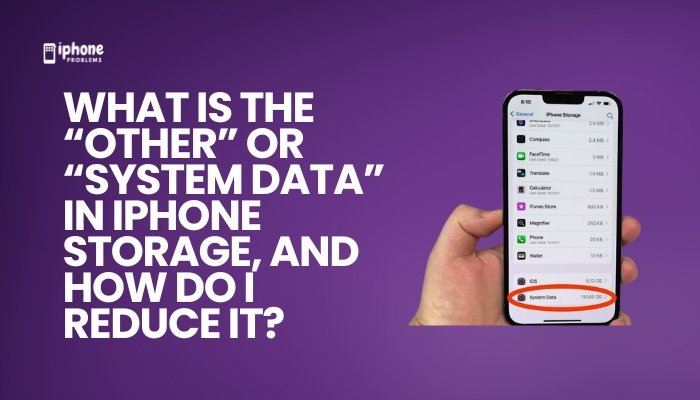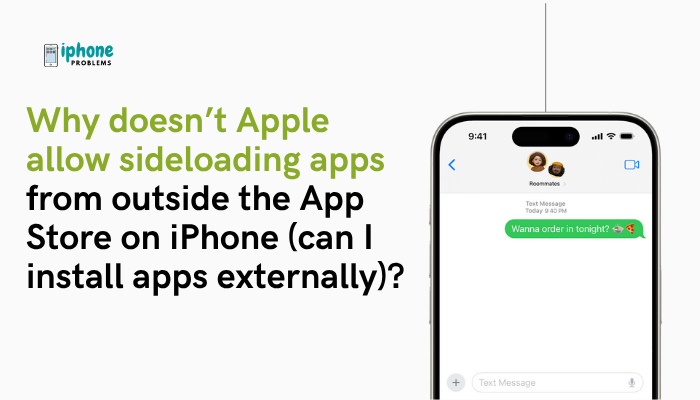If you’ve ever checked your iPhone storage and been surprised by a large section labeled “Other” or “System Data”, you’re not alone. This mysterious category often takes up several gigabytes and seems impossible to clear. So, what is it—and more importantly, how can you reduce it?
In this in-depth guide, you’ll learn what System Data is, why it grows, and how to safely reduce it without affecting your important files.

📊 What Is “Other” or “System Data” in iPhone Storage?
Apple’s Definitions:
- On iPhones running iOS 15 and earlier, the category appears as “Other”.
- From iOS 16 onward, it’s labeled as “System Data”.
📁 What Does It Include?
System Data is a catch-all category that contains:
- System caches
- Temporary files
- Siri voices
- Fonts
- Logs and updates
- Safari cache and website data
- Mail attachments and messages caches
- Streaming app buffers (e.g., Netflix, Spotify)
This data helps your iPhone run faster and more efficiently. However, it can sometimes grow unnecessarily large due to bugs, old caches, or corrupted files.
🧪 How to Check System Data Usage
Steps:
- Go to Settings > General > iPhone Storage.
- Wait a few seconds for the storage bar to load.
- Scroll down to see a category labeled System Data.
You may notice this category taking up anywhere from 2GB to over 20GB depending on your usage.
🧹 How to Reduce System Data on iPhone
While Apple doesn’t allow you to delete System Data directly, you can reduce it indirectly using several methods.
✅ Clear Safari Cache
Safari stores website data to load pages faster, but this cache can grow large over time.
Steps:
- Go to Settings > Safari.
- Tap Clear History and Website Data.
- Confirm when prompted.
This clears cookies, site data, and browsing history—but won’t affect your bookmarks or saved passwords.
✅ Delete Old Message Attachments
Messages and iMessage media (photos, videos, documents) contribute to System Data buildup.
Steps:
- Go to Settings > General > iPhone Storage > Messages.
- Tap Review Large Attachments.
- Delete old or unnecessary files.
You can also set messages to auto-delete:
- Settings > Messages > Keep Messages > 30 Days.
✅ Offload and Reinstall Storage-Heavy Apps
Apps like Instagram, Facebook, YouTube, and Spotify store large amounts of cached data (streamed videos, audio, or browsing data).
Steps:
- Go to Settings > General > iPhone Storage.
- Tap on a large app.
- Select Offload App (retains documents and data).
- Tap Reinstall App after offloading.
This resets the app’s cache while keeping user data like login info.
✅ Restart Your iPhone
A simple restart can clear temporary files and logs that are stored as System Data.
Steps:
- Hold the Side button and either Volume button (Face ID models) or just the Side button (Touch ID models).
- Slide to power off, wait 30 seconds, then power on.
✅ Delete Old iOS Updates and Siri Voices
Previous update files and offline Siri voices can occupy several gigabytes.
For iOS update files:
- Go to Settings > General > iPhone Storage.
- Look for iOS Update.
- Tap it and select Delete Update if available.
For Siri voices:
- Go to Settings > Accessibility > Spoken Content > Voices.
- Tap each voice and delete any unused downloaded voices.
✅ Reset Settings (Optional Step)
This doesn’t erase your data but clears all customized settings, which may help clear system-related cache.
Steps:
- Go to Settings > General > Transfer or Reset iPhone > Reset.
- Tap Reset All Settings.
⚠️ Last Resort: Backup and Restore
If System Data is extremely large (e.g., 15–30GB) and won’t reduce using the above steps, the most effective method is a full backup and restore.
Steps:
A. Back Up Your iPhone:
- Use iCloud: Settings > Your Name > iCloud > iCloud Backup > Back Up Now.
- Or use iTunes/Finder on a computer.
B. Erase All Content:
- Go to Settings > General > Transfer or Reset iPhone > Erase All Content and Settings.
C. Restore From Backup:
- After restart, follow prompts to restore from iCloud or iTunes backup.
This clears accumulated junk data without affecting your important files.
🧠 Pro Tips to Prevent System Data Bloat
- Clear Safari cache regularly.
- Use streaming apps (Netflix, YouTube) wisely—offline downloads can fill up space quickly.
- Offload apps monthly to clear temporary data.
- Avoid letting apps store large message threads with attachments.
- Restart your iPhone weekly to maintain system performance.
📋 Summary Table
| Method | Purpose |
| Safari Cache | Clear stored website data |
| Message Attachments | Remove large files from iMessage |
| Offload Apps | Clear app cache without deleting data |
| Restart iPhone | Purge temporary logs and system files |
| Delete iOS Updates | Remove leftover update files |
| Reset Settings | Fix storage glitches without deleting personal data |
| Backup & Restore | Most effective cleanup method for System Data |
✅ Final Thoughts
“System Data” (or “Other” storage) can be frustrating because it’s hidden and hard to manage directly. But with a combination of cache clearing, app management, and smart maintenance, you can keep your iPhone’s storage healthy and avoid unnecessary slowdowns.
Regularly checking your storage and applying these methods ensures your iPhone performs at its best—without running out of space unexpectedly.
Meta Description:
Wondering what “Other” or “System Data” means in iPhone storage? Learn what it includes and how to reduce it using safe, effective methods without deleting important data.






